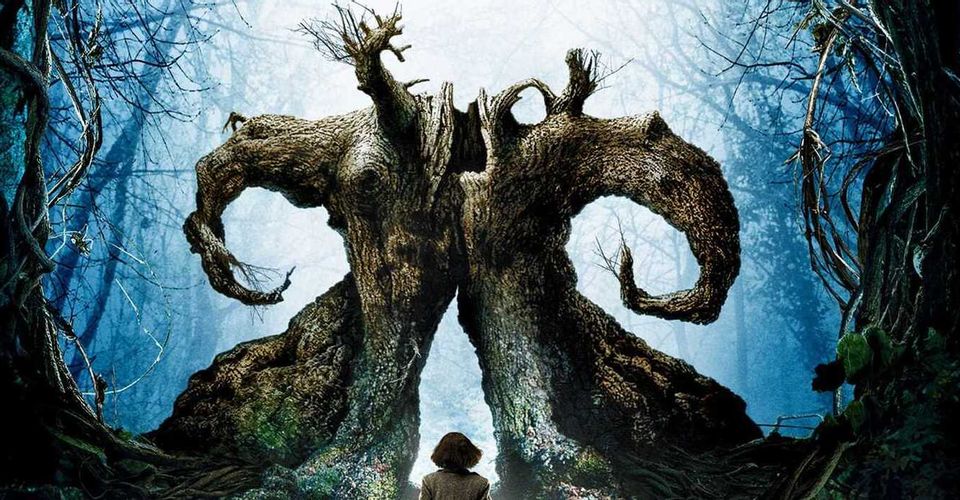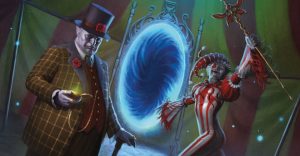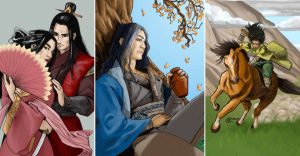Pan’s Labyrinth: The Real Meaning Of Guillermo Del Toro’s Dark Fairytale

Guillermo del Toro’s Pan’s Labyrinth is a fantasy, but the dark fairytale has a deeper meaning. Pan’s Labyrinth is both a period piece rooted in historical events and a fantasy exploring childlike fears and wonders, but the true meaning of the film lies in its ability to reflect these two aspects as parallel experiences. Acclaimed movie director Guillermo del Toro is well-known for his sensibilities to combine the fantastical with the mundane, blurring the line that separates mythical monsters from everyday people. The auteur’s violent yet whimsical fable, still considered a cinematic masterpiece, is perhaps the crowning example of his storytelling style.
Pan’s Labyrinth is about Ofelia, a young girl who is desperate to escape her situation. The story in Del Toro’s movie is set in Spain after the Civil War; Ofelia’s widowed mother has (foolishly) remarried a fascist, Captain Vidal. His intrusion into Ofelia’s home life has threatened her sense of security. She turns inward — and embarks on an epic, and increasingly fantastic, journey of escape.
Pan’s Labyrinth has been a frequent subject for critical analysis, with many seeing the film as an allegory for the aftereffects and trauma of war. Del Toro has expressed that Pan’s Labyrinth‘s meaning is, at its heart, a simple story created to embody the fairytales that inspired the work. In an interview included in the home video release, the director stated that this simplicity is what scares people and delivers a clear message in narratives such as this. The lack of explanation about the magical happenings that Ofelia experiences in Pan’s Labyrinth is both unsettling and poetic, allowing the story to flow within its own world and through its imagery.
Pan’s Labyrinth’s Meaning Explained — What Del Toro’s Movie’s Really About

Explaining Pan’s Labyrinth‘s meaning involves looking at the symbolism driving the story. The characters are allowed to be archetypes corresponding to their roles within folktale traditions, as well as to develop the main themes throughout the story. The protagonist, Ofelia, and the heroes and villains are defined in relation to their fairytale counterparts. For instance, del Toro points out that the rebels are like the woodsmen rescuing Little Red Riding Hood from the Big Bad fascist Wolf.
In a similar manner, the fantastical elements that Ofelia witnesses can be seen as her way of making sense of the world around her, the same way that fairytales are used to explain complex concepts in a more easily digestible manner. The Pale Man monster in Pan’s Labyrinth, for example, symbolizes predatory authority figures who victimize those who are vulnerable — fitting in with the movie’s allegory about fascism, and specifically making a thinly veiled criticism of the Catholic church.
Pan’s Labyrinth Is About Choice And Disobedience

Del Toro has stated that the themes of Pan Labyrinth can be traced throughout the narrative due to the symbolic repetition, a common trait of fairytales. The faun in Pan’s Labyrinth gives Ofelia three tasks to complete in order to help her return to her place as queen of the underworld, but she often disobeys instructions and makes choices based on her own conscience. Her decisions are not always the safest, as in the case of eating the Pale Man’s food, but her morality ultimately allows her the noblest and most heroic of endings. Instead of spilling her baby brother’s blood, Ofelia spilled her own to open the portal to the underworld.
Likewise, operating under a fascist regime carries its own set of dangers grounded in the real world. The rebels resist autocratic rule through disobedience, which is reminiscent of Ofelia’s tendency to follow her own choices instead of blindly following orders. The housemaid Mercedes parallels Ofelia in her subversive behavior, undergoing her own trials against the monstrous Captain Vidal. Thus, the two intertwining narratives repeat the same patterns to prove that trusting personal feelings over authority leads to a purer sense of morality.
Del Toro talks about how the psychologist Bruno Bettelheim theorized that, throughout history, fairytales have been used to manifest enigmatic aspects of the world. At first, these stories were used to explain natural phenomena, but as science developed, they represented more psychological aspects related to human behavior. Pan’s Labyrinth is del Toro continuing this rich tradition in his own way, employing specific iconography to bring fairytale elements to the real world and using monsters to express a tapestry of human morality.
About The Author
















